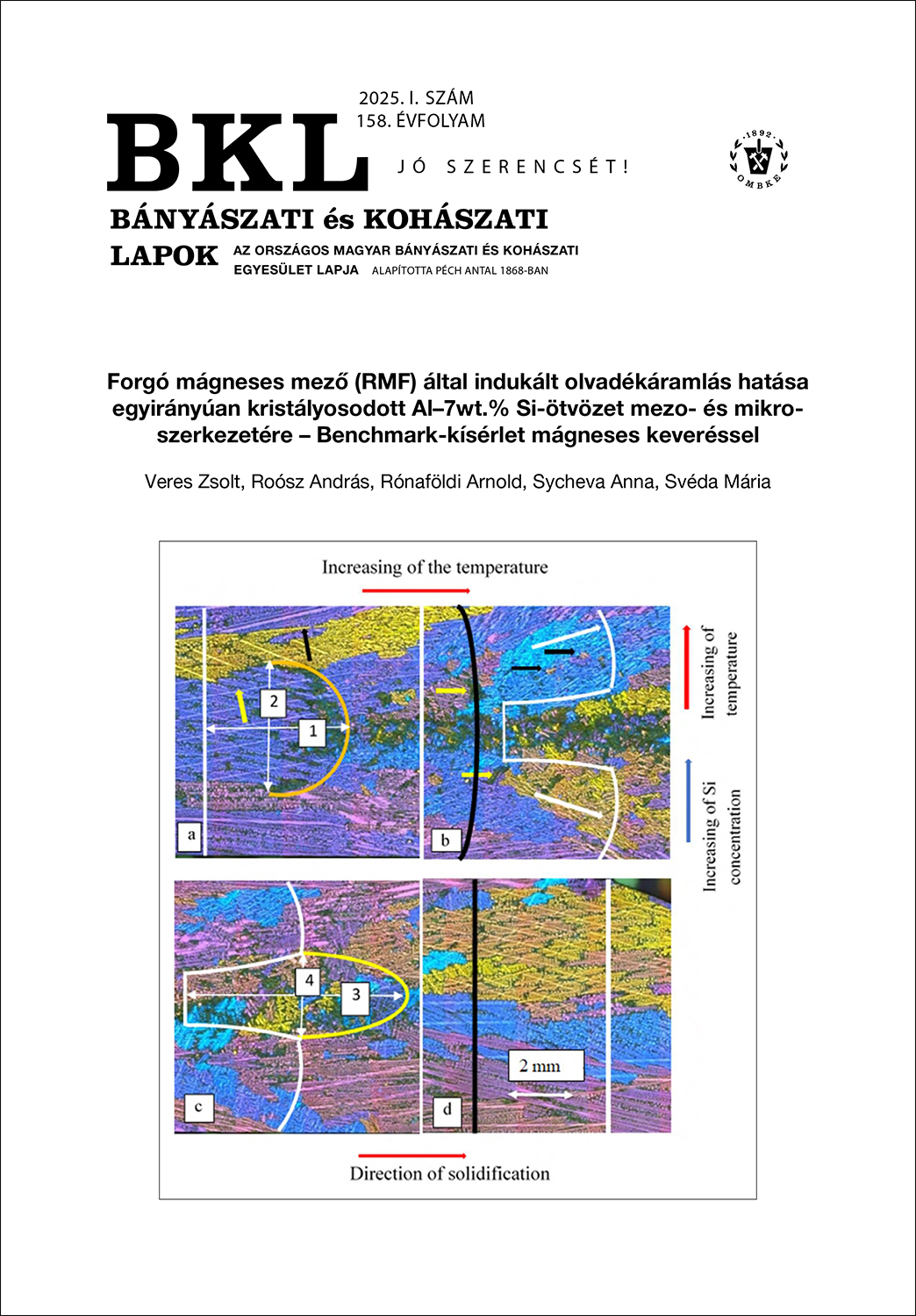On the physical processes of rock cleavage
Abstract
Nowadays, energy efficiency has become an important issue. We cannot give up on the extraction of rocks and mining, we must continue to look for ways to minimize energy consumption. The optimal design of the used cutting tools must be promoted by optimizing energy costs and the costs of wear and tear [3]. In this work, I want to describe the physical process taking place during rock splitting in a simple case using a quasi-static physical model. The dynamic description of the phenomenon [1] is not our goal now, so neither is the description of the stochastic property of the cutting force [2].
The determination of the cutting force and the knowledge of the energetic characteristics are of central importance, based on this it is possible to improve the tools used for cutting rocks [3]. As in my previous article [4], I set out to provide a complete physical description of the splitting task [5] discussed by Evans: from the penetration of the tool, through the occurrence of the fracture, to the splitting of the stone chips.
References
J. Rojek (2007): Discrete element modelling of rock cutting. Computer methods in material science, vol. 7. no. 2.
Duan Xiong, Yu Li, Cheng Dazhong (1995): Chaotic dynamical features of rock breakage mechanism with self-controlled hydro pick. Chinese Journal of Rock mech. and Engng., 14, supp., 484–491.
J. Rostami, L. Ozdemir, D. m. neil.: Roadheaders Performance Optimizatin for Mining and Civil Const-ruktion. Earth mechanics Institute, Golden, Colorado 80401
Omaszta István (2024): Gondolatok Evans kőzethasí-tási modelljéről. Bányászati és Kohászati Lapok, 157/II, 19–24.
A. A. Evans, C. D. Pomeroy (1966): The Strength, Fracture and Workability of Coal. Pergamon Press
Gao Kuidong, Du Changlong, Jiang Hongxiang, Liu Songyong: A theoretical model for predicting the peak cutting force of conical picks. School of Mecha-nical and Electrical Engineering, China University of mining & technology
Yinghui Liu, Y. Bar-Cohen, Zensheu Chang: Procee-dings of IDETC/CIE 2005 ASME 2005 International Design Engineering Technical Conferences & Com-puters and Information in Engineering Conference, 2005, Long Beach, California, USA
M. H. Miller, D. L. Sikarskie: On the penetration of rock by three-dimensional indentors. space systems Division AVCO Corporation, Department of Aerospa-ce Engineering, University of Michigan
L. D. Landau, E. M. Lifsic: Elméleti fizika VII. Ru-galmasságtan, Diszlokációk és üregek elmélete
Ch. Lunow: Two-dimensional simulation of the pressing and the cutting rock destruction. tU Ber-gakademie Freiberg Geotechnical Institute Chair for Rock mechanics
Hua Guo: Rock cutting studies using fracture mecha-nics principle. University of Wollongong, Research online
Dr. Bocsánczy János: Bányagéptan, Jövesztő és Ra-kodógépek 151–153. o.
H. Blumenauer, G. Pusch: Műszaki törésmechanika. 3. fejezet
Anjana Thoroppady Kittu: Surface energy characte-ristics of granite and limestone aggregates with res-pect to 2D and 3D surface roughness measurements. Bachelor of Technology in Civil Engineering Mahat-ma Gandhi University Kottayam, Kerala, 2007. sub-mitted to the Faculty of theGraduate College of the Oklahoma State University in partial fulfilment of the requirements for the Degree of Master Of Science. December, 2013.



